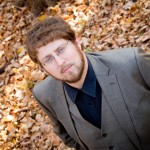Hyperorgan Technology, Augmented Reality, and the Triumph of Acoustic Music
Advances in computing power have allowed us to integrate technology more seamlessly into our everyday analog lives, moving from “virtual” to “augmented” reality. These advances have also initiated renewed interest in acoustic music-making. Organ builders in France, Germany, and Sweden have integrated digital control technology into acoustic, even mechanical, organs in ways that augment their analog affordances, creating so-called “hyperorgans.” Such examples illustrate how the application of digital technology to the organ does not inevitably lead to electronic organs, but rather to more expressive, versatile, and purely acoustic pipe organs worthy of a central role in twenty-first-century music.
Performer-scholar Randall Harlow’s expertise includes empirical performance research, the Inuit organ tradition, hyperorgan technology, and twenty-first-century avant-garde. He has presented at conferences at Harvard University, Cornell University, Westfield Center, the Society for Music Perception and Cognition, Göteborg International Organ Art Center (GOArt), and Eastman Rochester Organ Initiative Festival. Past research includes the first study of the pipe organ culture of Greenland. He currently serves on the AGO Committee for New Music Competitions and Commissions. His numerous premieres include compositions by John Anthony Lennon, Kaikhosru Sorabji, and Karlheinz Stockhausen, concertos by Petr Eben, Tilo Medek, and Giles Swayne, and works with live electronics by Steve Everett, Steven Rice, and René Uijlenhoet. His forthcoming debut recording features a transcription of Franz Liszt’s legendary Études d’Exécution Transcendante. He holds a DMA from the Eastman School of Music and is currently visiting professor of organ and music theory at the University of Northern Iowa.

